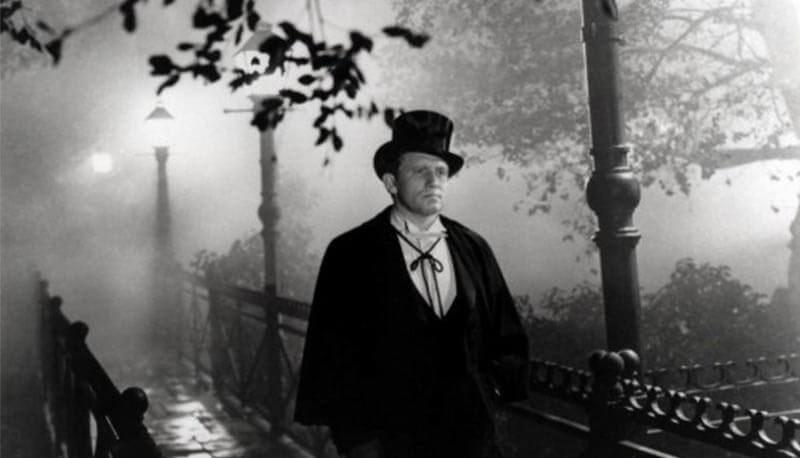Concetti Chiave
- Stevenson's life was marked by health struggles, travel, and a conflict with Victorian society, rejecting family religious principles and achieving fame with works like "Treasure Island".
- The plot revolves around Mr. Utterson discovering Dr. Jekyll's transformation into Mr. Hyde, leading to Jekyll's eventual suicide to eliminate his evil side.
- Symbolism in the story includes the names 'Jekyll' and 'Hyde', weather elements like fog, and dual aspects of settings and characters, emphasizing themes of duality.
- The novel explores themes of human duality, societal critique, and the struggle between civilization and primal instincts, influenced by Darwin, Victorian society, and Nietzsche.
- It features a multi-narrative structure with perspectives from four narrators, analyzed by Stephen King as a precursor to Freud's ideas and linked to Apollonian and Dionysian dualism.
Stevenson
-was born in Edinburgh in 1850 in a Calvinist family ;
-spent most of his childhood in bed because of his poor health ;
-travelled a lot during his adolescence;
-married an American woman and they moved to Australia;
-died of a brain haemorrhage in 1894
-was in conflict with his social environment: the respectable Victorian world;
-rejects his family’s religious principles and the love for respectability;
-became popular when he published “Treasure Island” and “The strange case of Dr Jekyll and Mr Hyde”;
-main characteristics in his works are: suspense, supernatural, strange titles, exotic settings;
The plot
-The story is told from the point of view of Mr Utterson a lawyer and friend of the scientist Dr Jekyll;
-after a series of crimes made by a mysterious character, he discovers that Jekyll has created a potion able to release his evil side, Mr Hyde ;
-these two beings are in continual struggle
-finally the Doctor has two choices:
-to conduce a life made of crime and depravity,
-to eliminate “Hyde” in the only way left: by killing him;
-he decided to suicide.
Title
-is unusual;
-'case' introduces to the investigative aspect;
-'Jekyll' and 'Hyde' have symbolical meanings: Dr.  Jekyll (like kill) will commits suicide for killing his evil part, Mr. Hyde (like hide) hides himself behind the respectable Doctor [*Symbolism].
Jekyll (like kill) will commits suicide for killing his evil part, Mr. Hyde (like hide) hides himself behind the respectable Doctor [*Symbolism].
Symbolism
-the story contains some symbols:
-the name 'Hyde' suggests something secret, hidden, Mr Hyde hides himself behind the respectable Doctor;
-the name 'Jekyll' suggests something like 'to kill', Dr. Jekyll commits suicide for killing his evil part;
-the weather: the fog, the cloudy sky, the night gives a sense of real and symbolic darkness;
-there are a lot of symbol of dualism, for example the mirror of the office, the house of Jekyll and Hyde and his doors;
The Duble
-there are a lot of elements of double:
-the double nature of setting: The setting of the novel seems to be halfway between London and Edinburgh. Both cities had a double nature. This setting dualism is reinforced by the symbolism of Jekyll’s house that is one but has two very different faces;
-the double of characters: Jekyll and Hyde are the opposites but are two faces of the same character, also Enfield and Utterson replay to the theme of double.
Themes
-The duality of human nature, a mixture of god and evil;
-The double (divided in the double of setting (the house, the door) and the double of characters (Jekyll and Hyde, Utterson and Enfield));
-man’s salvation (based on the destruction of one part of his nature if he lives in a civilized society);
-the critique of Victorian values (as hypocrisy for example when people doesn’t report the man to the police, they ask for money or the absence of women that highlights the male patriarchal world of Victorianism);
Influences
-this book is certainly influenced by:
-Darwin's theory of men's derivation from monkeys (the aspect of Hyde);
-studies about interior part of men, about the subconscious (the inside of Dr Jekyll);
-also the bad part of Victorian society influenced the novel (for the scientific revolution and [themes*]);
-and probably by Nietzsche (that said that society rules are prisions.
-Dr Jekyll and Mr Hyde has a
-There are four narrators, though whom almost the whole action is seen and filtered: Enfield, Utterson, Dr Lanyon and finally Dr Jekyll himself.
Stephen King's vision
-King made an analysis of the novel highlighting:
-the multi-narrative structure;
-some strange things;
-Stevenson's capacity of developing reader's imagination;
-he (King) considers the author as the precursor of Freud ideas;
-he said that the church has seen with a good eye the novel;
-he compares the dualism of Jekyll and Hyde with the dualism of Apollonian and Dionysian.
Domande da interrogazione
- ¿Cuál es la estructura narrativa de "Dr Jekyll y Mr Hyde"?
- ¿Qué simbolismo se encuentra en los nombres de Jekyll y Hyde?
- ¿Cómo se representa el tema del doble en la novela?
- ¿Qué influencias se pueden identificar en la obra de Stevenson?
- ¿Cómo ve Stephen King la novela de Stevenson?
La novela tiene una estructura multi-narrativa con cuatro narradores: Enfield, Utterson, Dr Lanyon y finalmente el propio Dr Jekyll.
El nombre 'Hyde' sugiere algo oculto, mientras que 'Jekyll' sugiere 'matar', reflejando la lucha interna y el destino de los personajes.
El tema del doble se refleja en la dualidad de los personajes (Jekyll y Hyde, Utterson y Enfield) y en el entorno (la casa de Jekyll con dos caras diferentes).
La obra está influenciada por la teoría de Darwin, estudios sobre el subconsciente, la sociedad victoriana y posiblemente por Nietzsche.
King destaca la estructura multi-narrativa, la capacidad de Stevenson para desarrollar la imaginación del lector y compara el dualismo de Jekyll y Hyde con el dualismo Apolíneo y Dionisíaco.






 Accedi a tutti gli appunti
Accedi a tutti gli appunti
 Tutor AI: studia meglio e in meno tempo
Tutor AI: studia meglio e in meno tempo